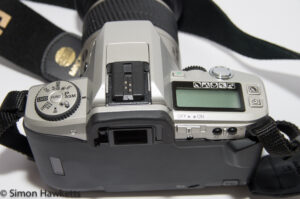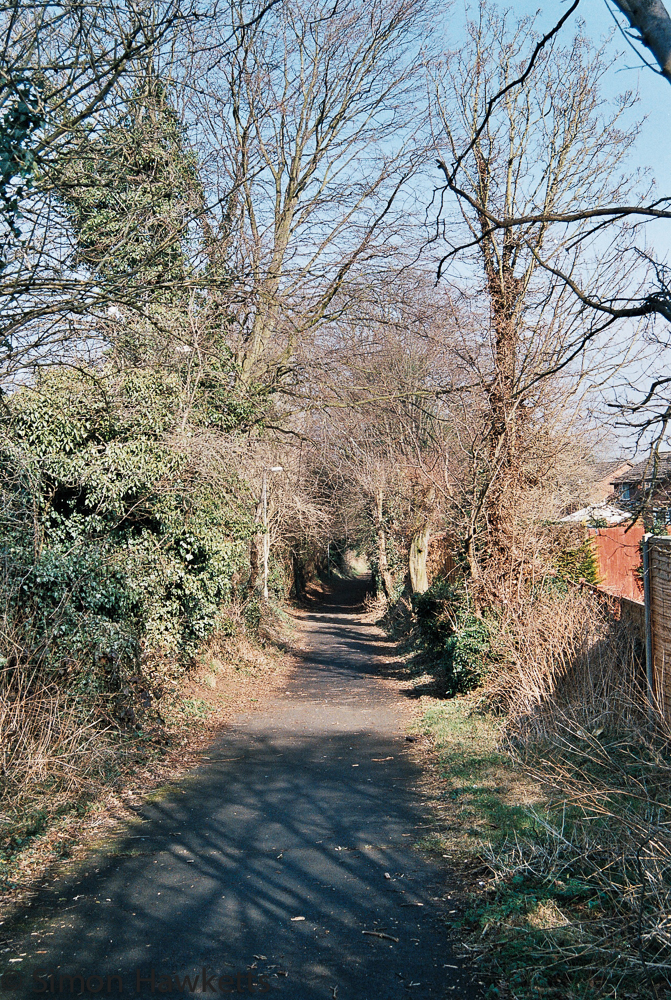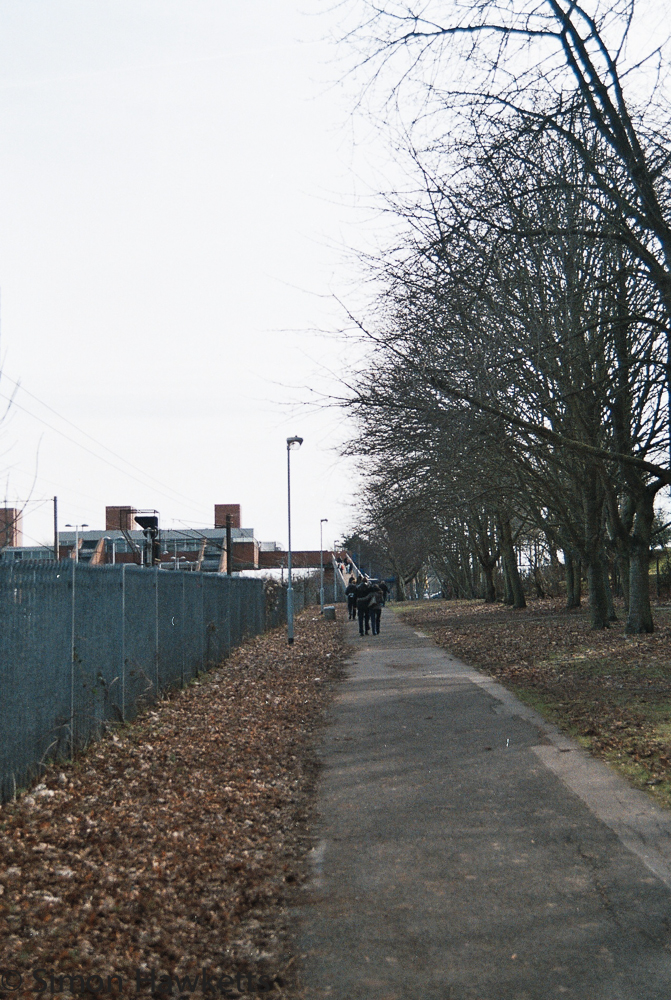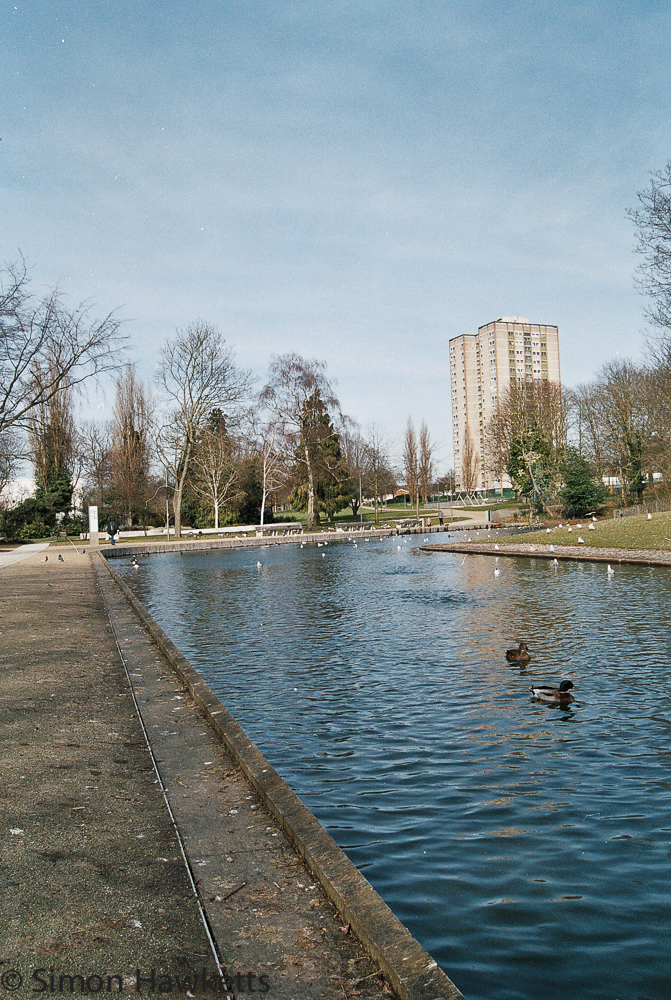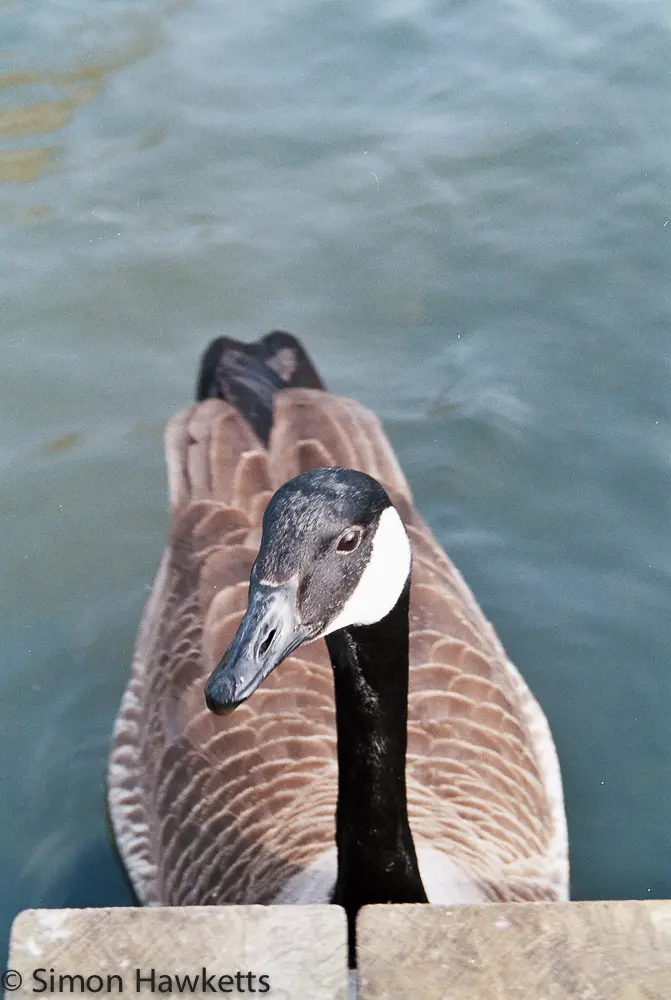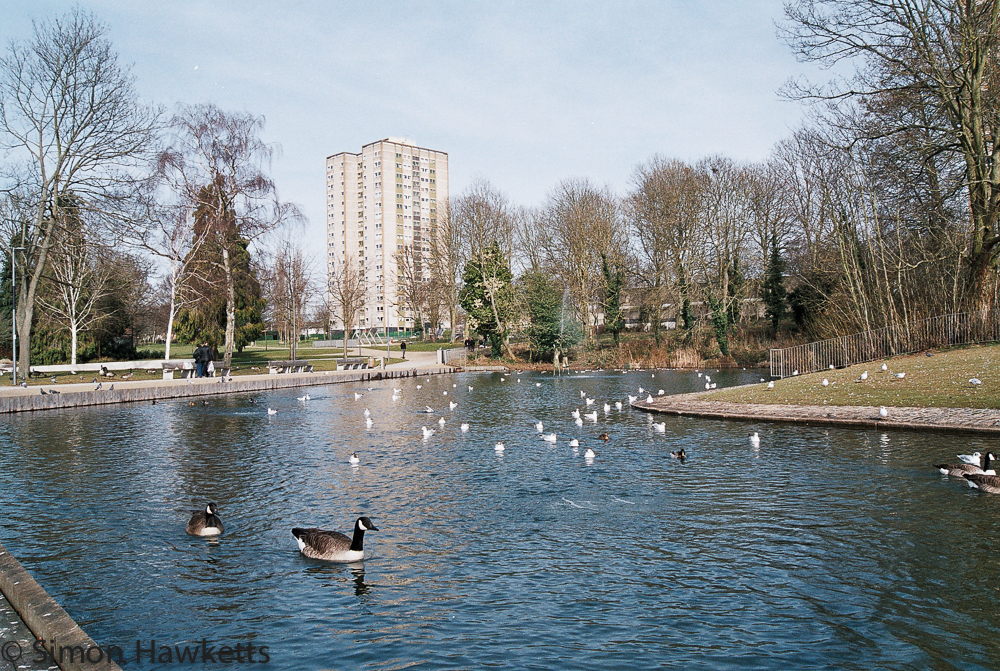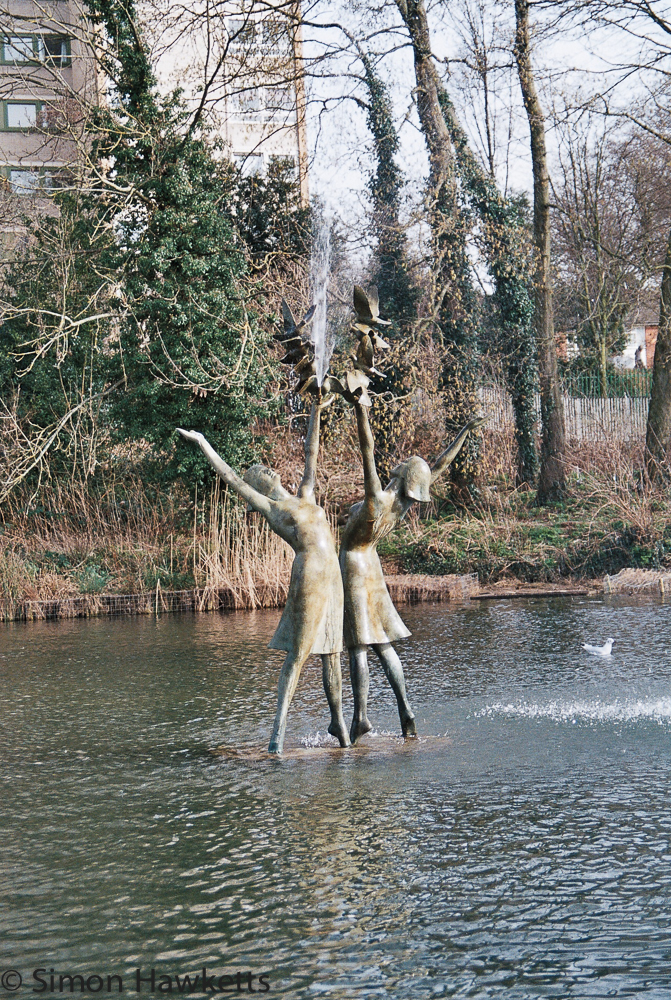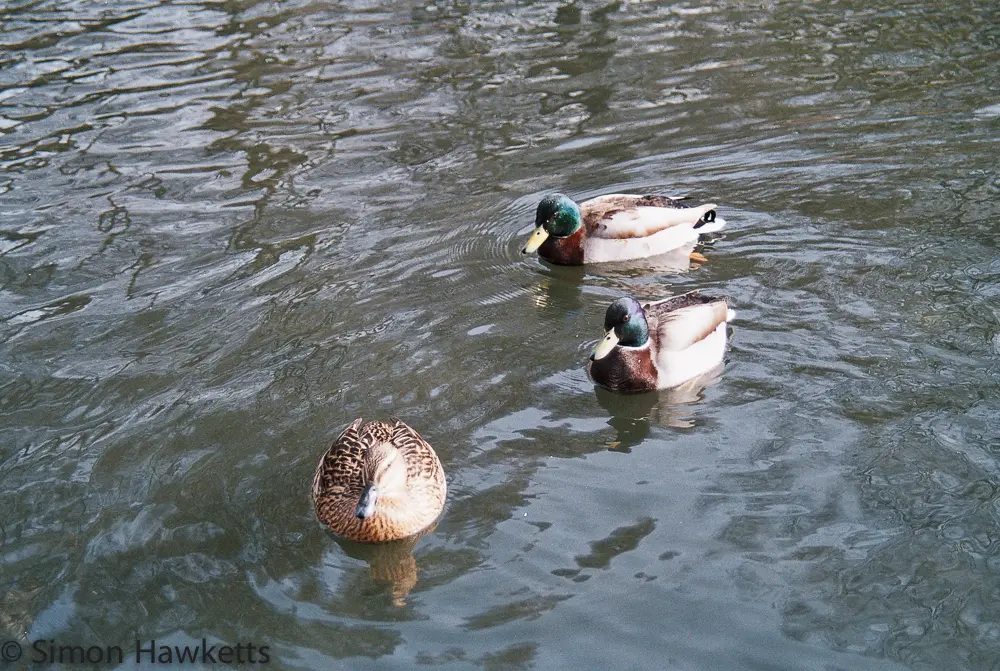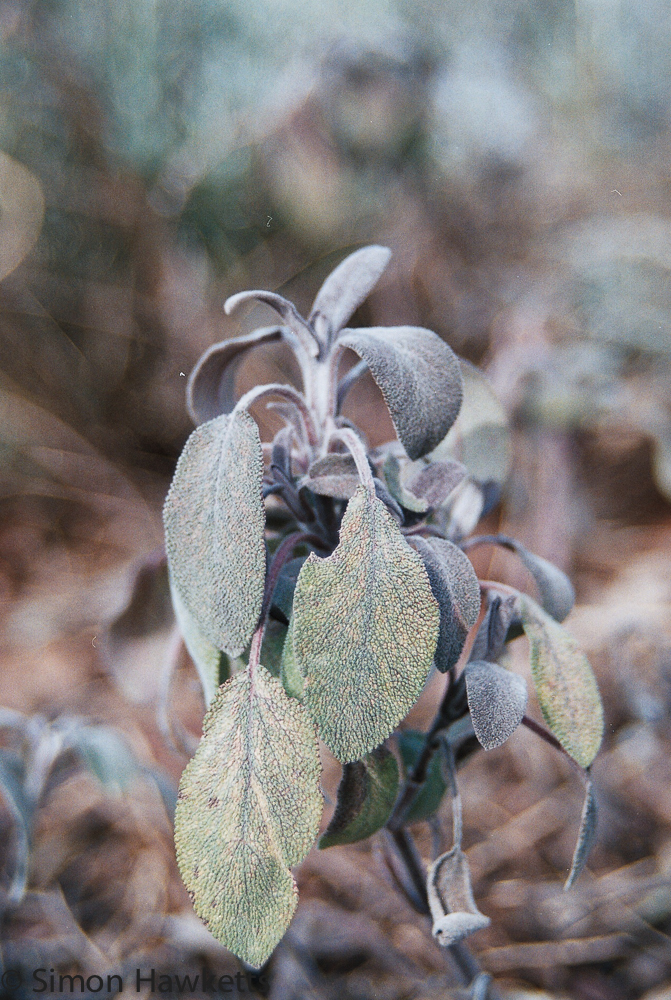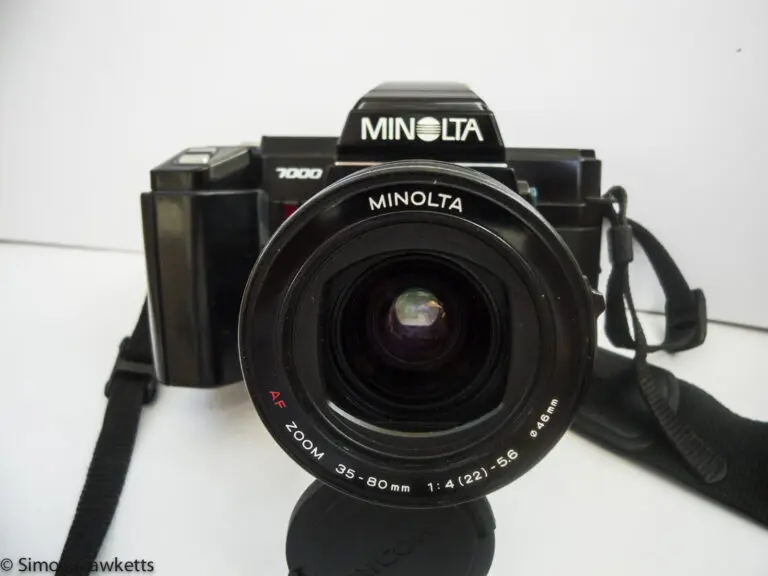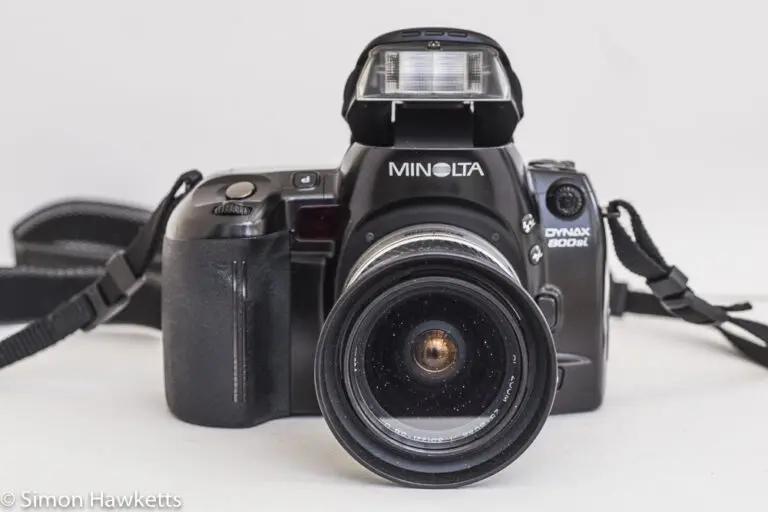Minolta Dynax 5 autofocus camera
This is a review of the Minolta Dynax 5, one of the last 35 mm film, autofocus single lens reflex cameras made by Minolta before they moved to digital cameras.
Minolta Dynax 5 Images
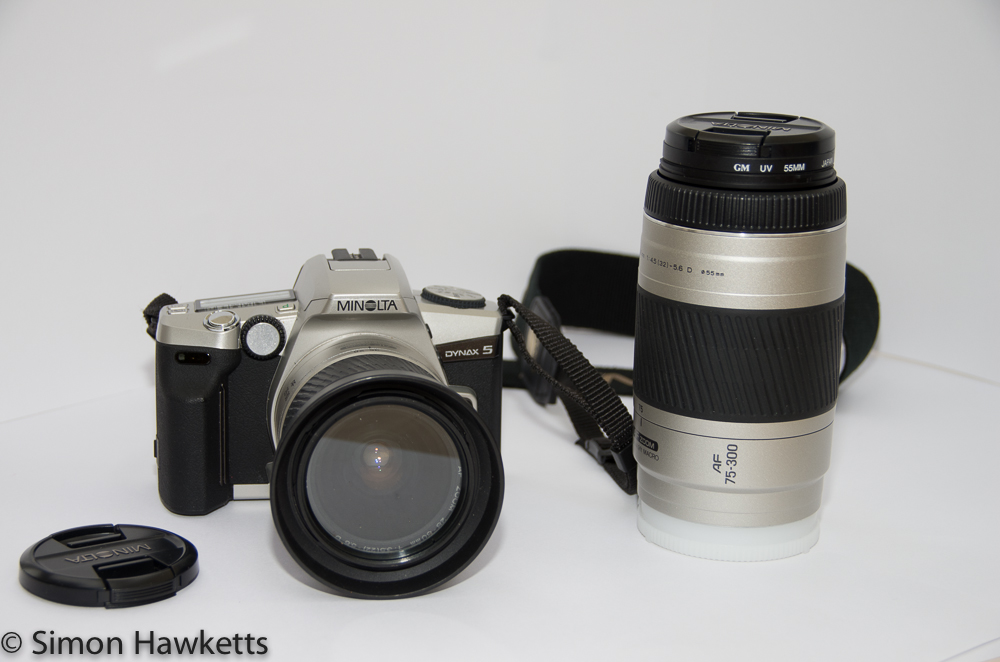
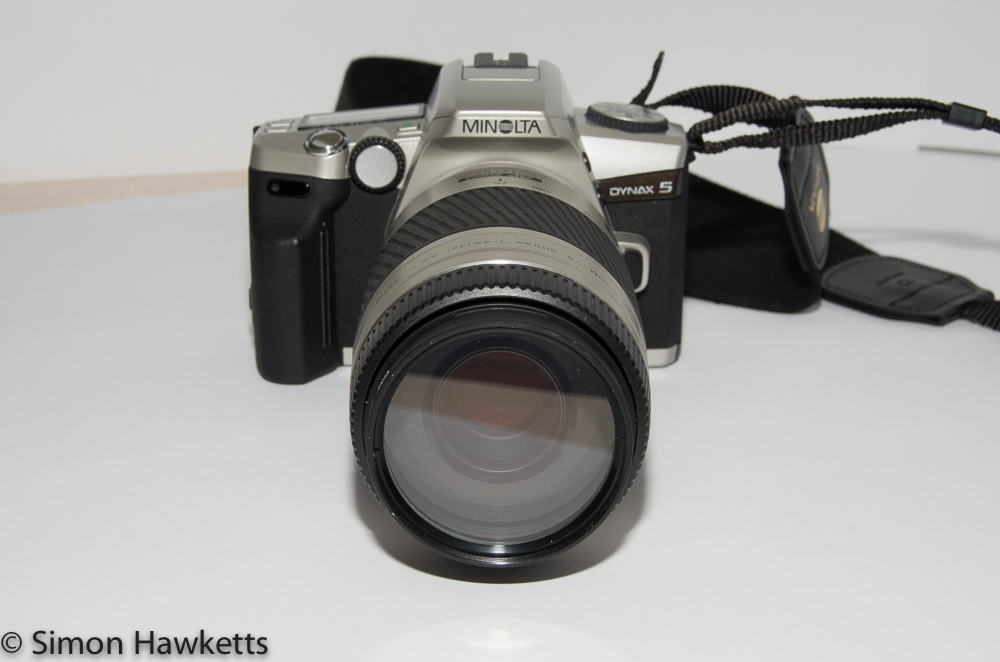
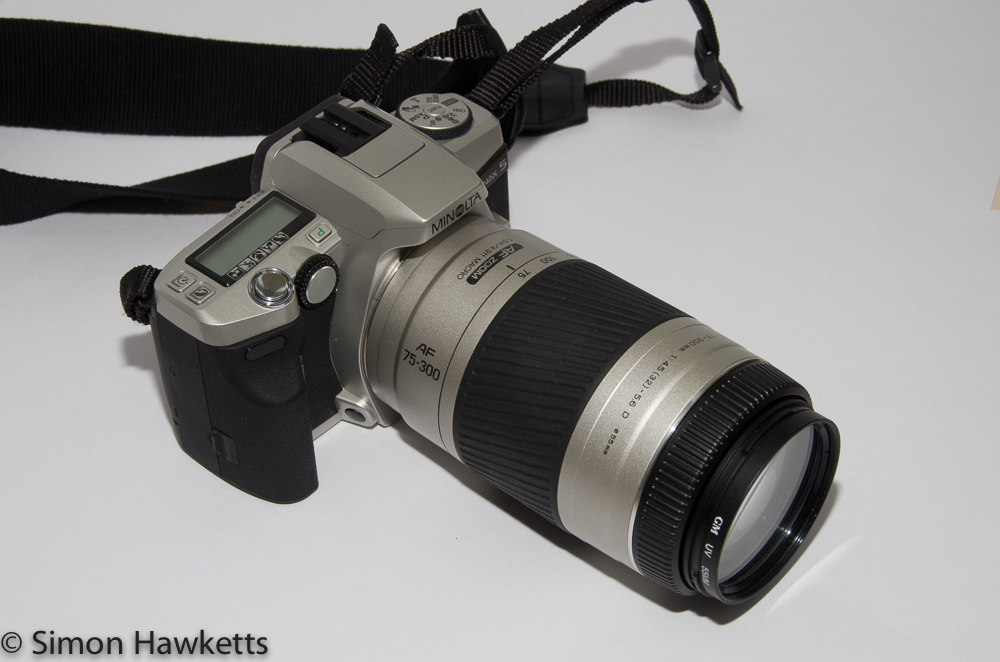
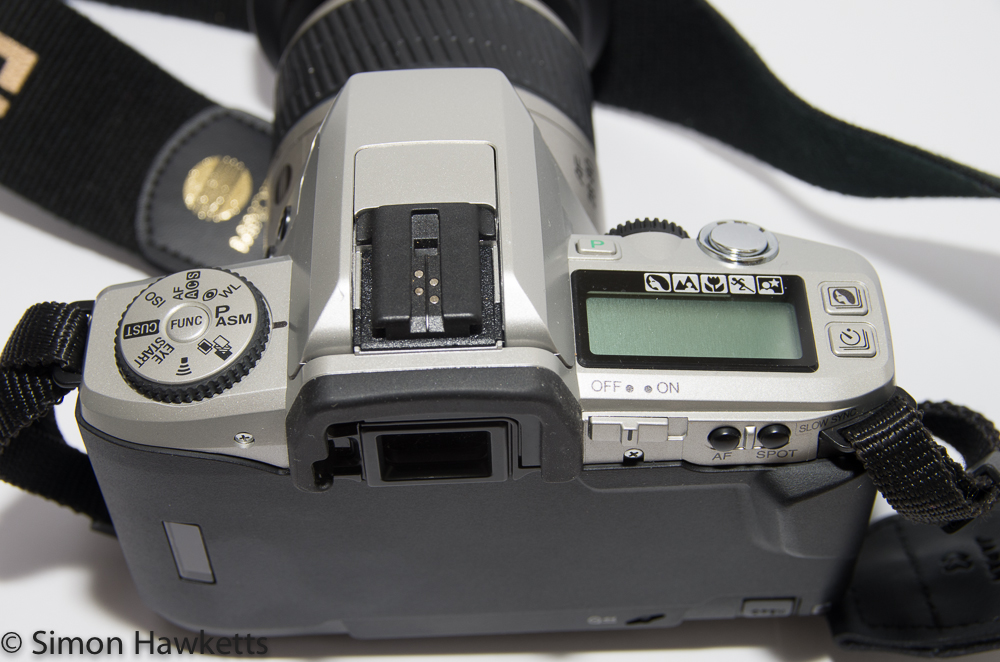
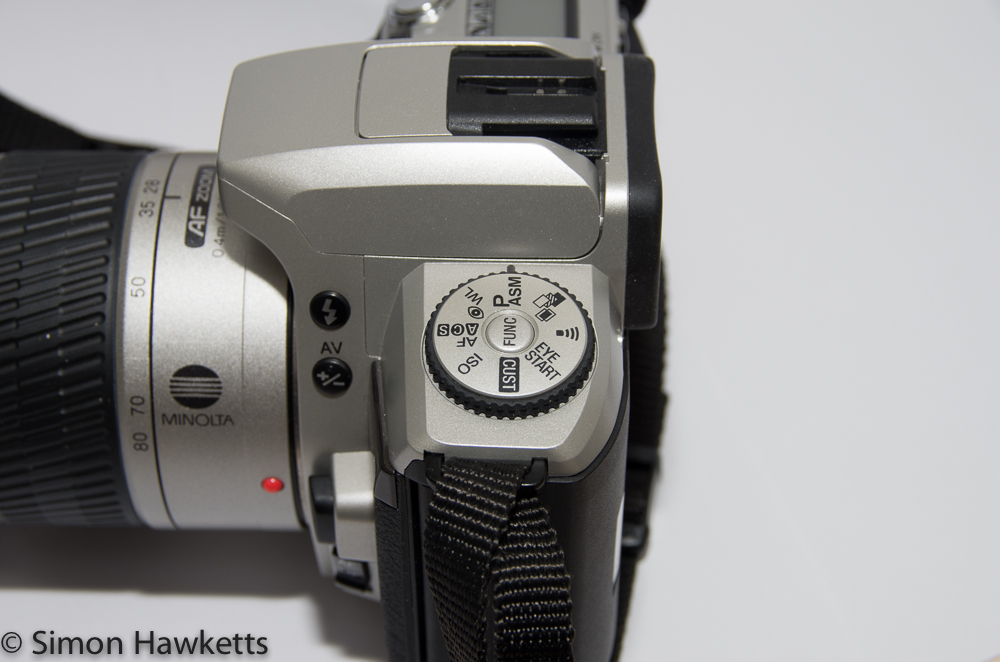
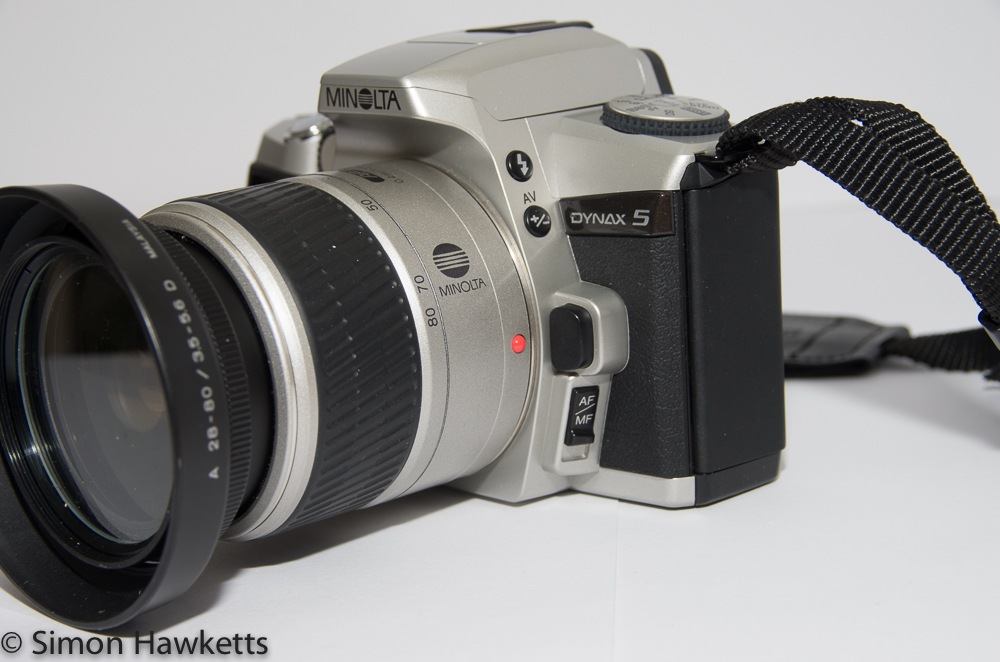
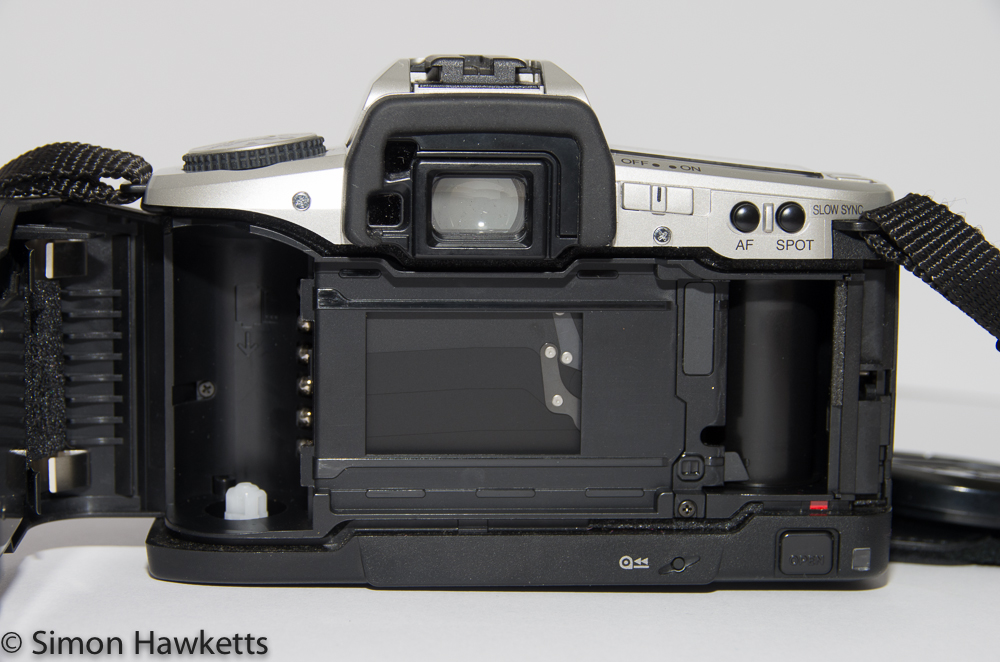
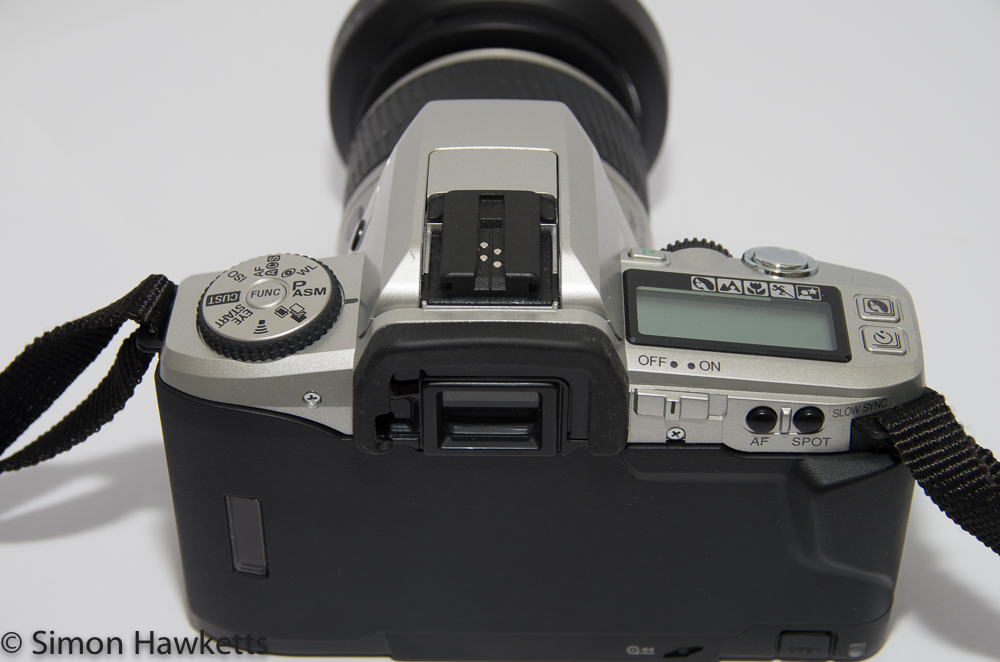
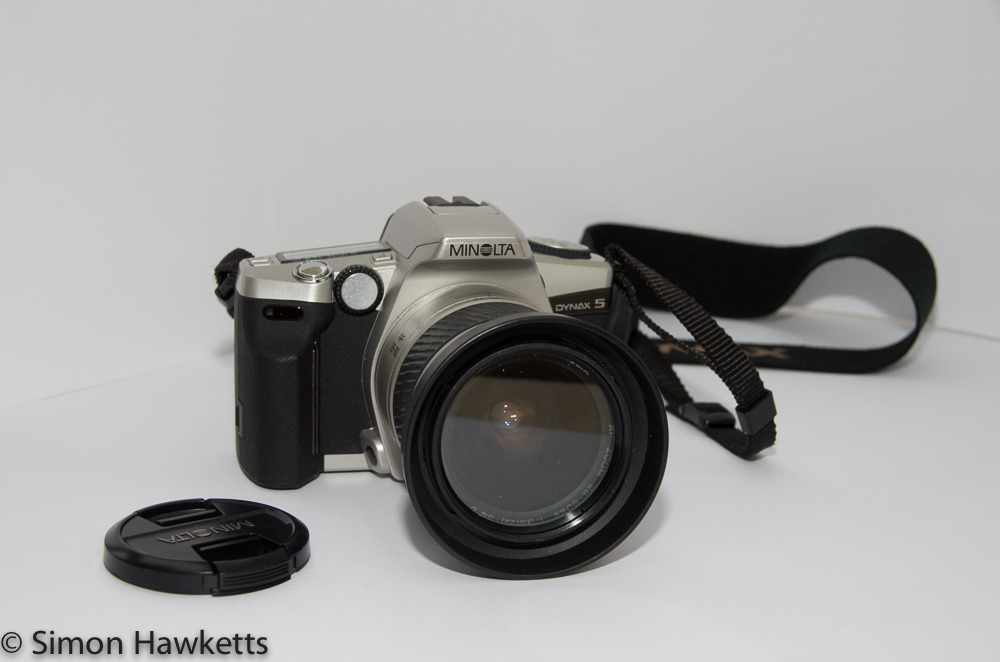
My Minolta Dynax 5 camera
As I implied above, it doesn’t seem correct to call the Dynax 5 a vintage camera because it is in the ‘last film camera’ class before Minolta moved to digital camera production.
Of course Minolta, as a camera manufacturer has gone now, having been sold to Konica and then Sony, but Sony cameras have many features in common with this camera including the lens mount.
I picked this camera up from eBay for around £15 which was for the camera body, an autofocus 28 – 80 mm f/3.5 – 5.6 lens, an autofocus 75-300 mm f/4.5 – 5.6 lens and a Minolta camera bag. Both lenses were fitted with UV filters and as a bonus in the side pocket of the camera bag I found a reel of 35 mm Fuji superia X-TRA film which expired in 2004!
The short zoom has a plastic mount, but the 75-300 zoom is fitted with a metal mount. The only thing I’ve had to purchase was a pair of CR2 batteries and the film to go in the camera (I decided that 2004 was probably too old). As an initial try out, I’ve loaded a 24 exposure reel of Fujicolor C200.
This is an initial assessment of the camera as I try taking some pictures with it – I’ll edit this post as I get more experience of the camera.
Minolta Dynax 5 Camera Features
I have been really impressed with the quality and features offered on the 10-year-old camera, some of which would be really useful on my digital Pentax K-5.
Eye start
This is something I’ve never seen before, although I’ve since done a Google search and I believe it exists on current Sony cameras. When turned on, the camera detects as it is raised to the eye and starts to focus and set the exposure as the camera reaches your eye. Although I’d never heard of it before, I can see it being a really useful feature and I intend to give it a proper test as I put a reel of film through the camera.
Shooting Modes
The Dynax 5 is well-equipped with different shooting modes. As well as full manual exposure control, the camera supports Aperture priority, Shutter priority and Program Mode. For my test shots, I used Aperture Priority, since that is my normal shooting mode. I found the adjustment wheel quite tricky to move while I was taking a shot, although some of that was due to being not familiar with its location.
There is an exposure compensation adjustment of up to 3 stops either side of the metered exposure, which is controlled with a single button push and control wheel adjustment. The viewfinder shows this setting, so it is easy to adjust without taking your eye from the finder.
In Use
This is actually a nice camera to use.
It’s very light and fairly small, although not quite small enough to fit in a coat pocket. The shutter is quite quiet, but I found it’s also fairly light in operation, so the first time I used it I took about 3 frames in quick succession because I had it set to continuous shooting and didn’t take my finger away fast enough.
Apart from a slight issue I had with adjusting the aperture using the little wheel by the shutter release, it was easy to adjust most things with the eye to the viewfinder.
The autofocus seemed quite fast, although in common with all motor driven systems it’s noisy. I didn’t particularly notice this because most lenses on my Pentax are motor driven, but a user of a modern Nikon or Canon would probably find it very noisy.
The viewfinder has a good level of information displayed along the bottom, and the focus point selected lights up. It is possible to select a focus point, but it’s a fairly slow operation, which would be difficult to do with the camera held to the eye. In common with most 35 mm cameras, and certainly in relation to most APS-C sensor digital cameras, the viewfinder is big and quite bright. I’m confident that with a fast lens attached rather than the kit lens it would be very bright.
At the moment the weather has been so poor over the last few weeks that I haven’t yet put a full reel of film through the camera, but as soon as I do I’ll post the resultant pictures. For £15 I have to class this as a bargain, and I look forward to using this camera more over the next few weeks.
For anyone who may find it useful, the manual for the Minolta Dynax 5 is available on-line here.
Update: Sample Photos
Here is the first set of photographs I’ve taken with this camera. These were taken on a roll of 200 ASA Fujicolor colour negative film and processed at Tesco for £2-50 (I was quoted £3-50 yesterday – I think that must be 36 exp price). They have been copied exactly as processed with no enhancements. I’m pretty impressed with the quality.
Discover more from Everything Vintage
Subscribe to get the latest posts sent to your email.

